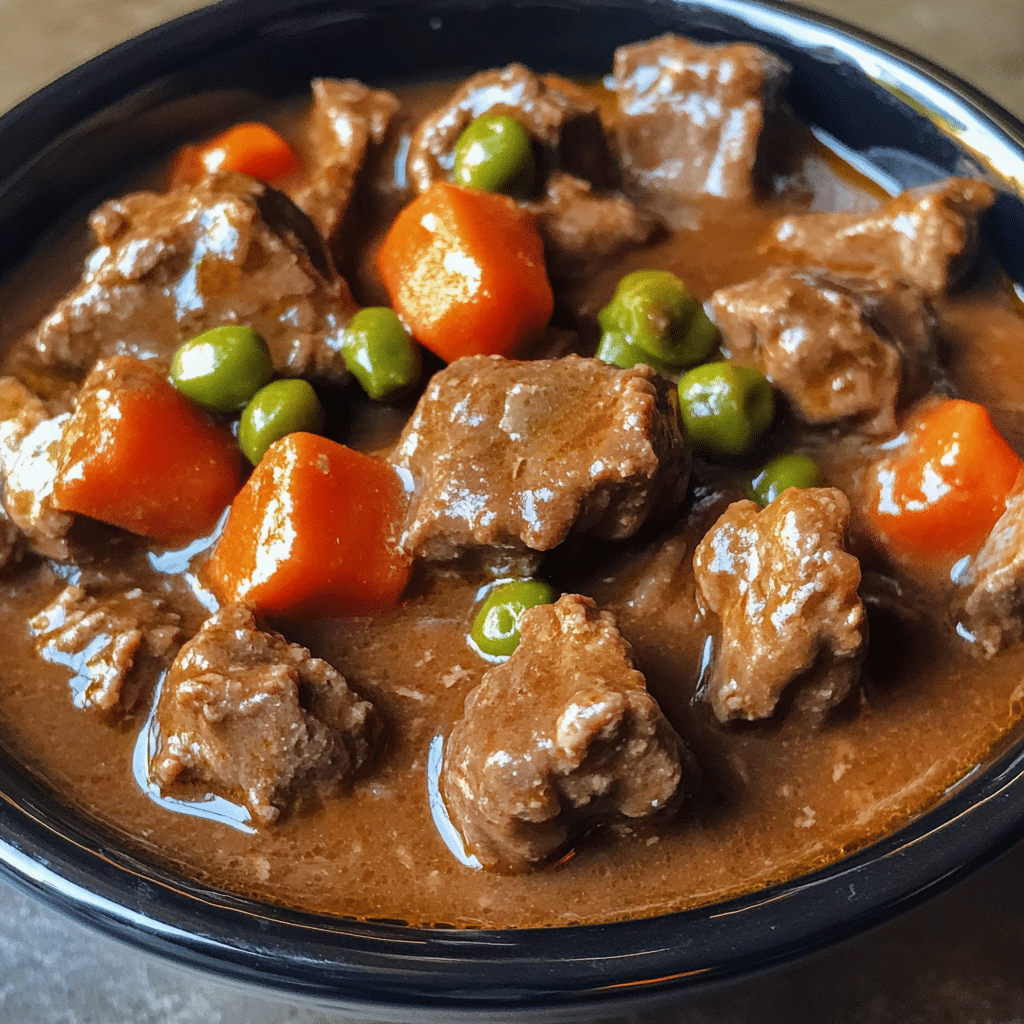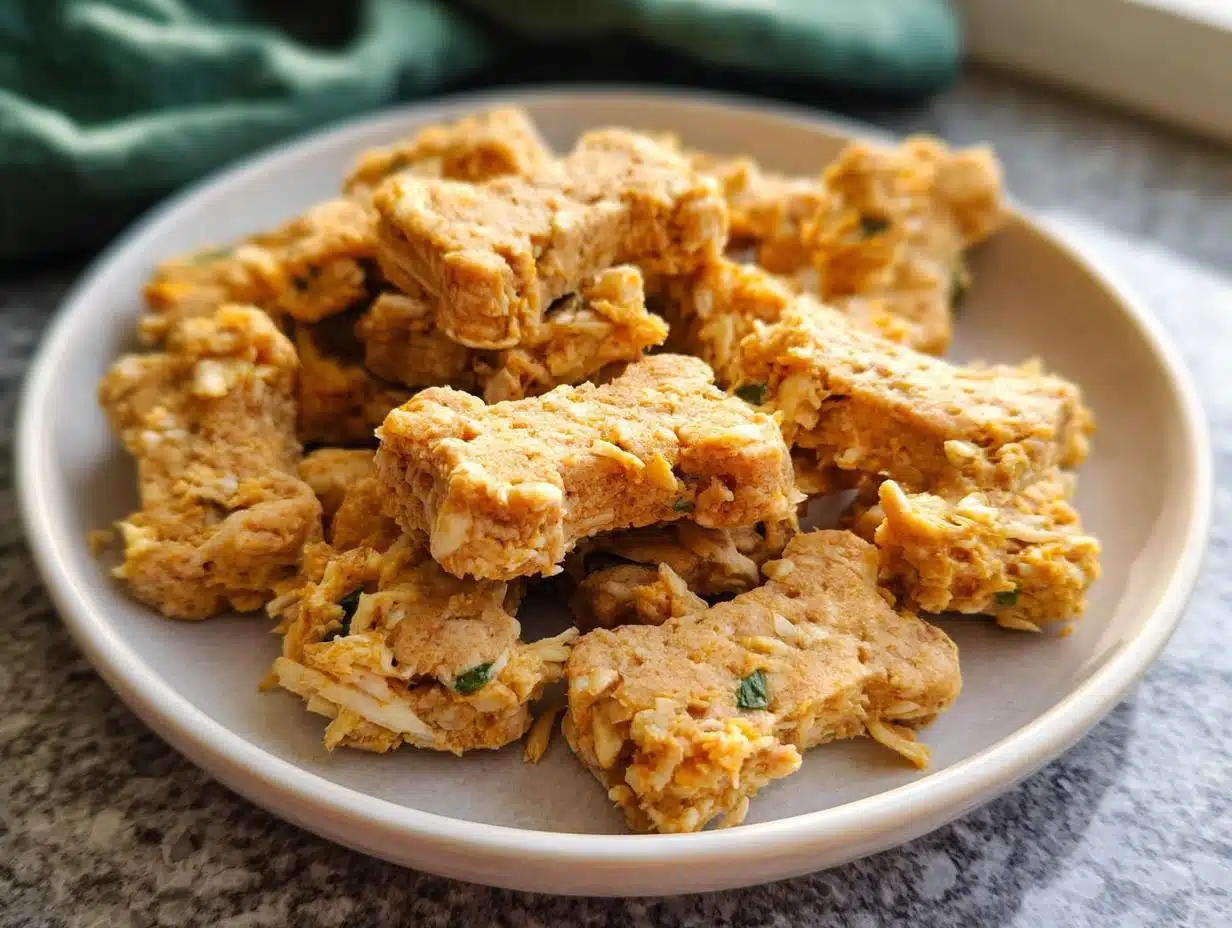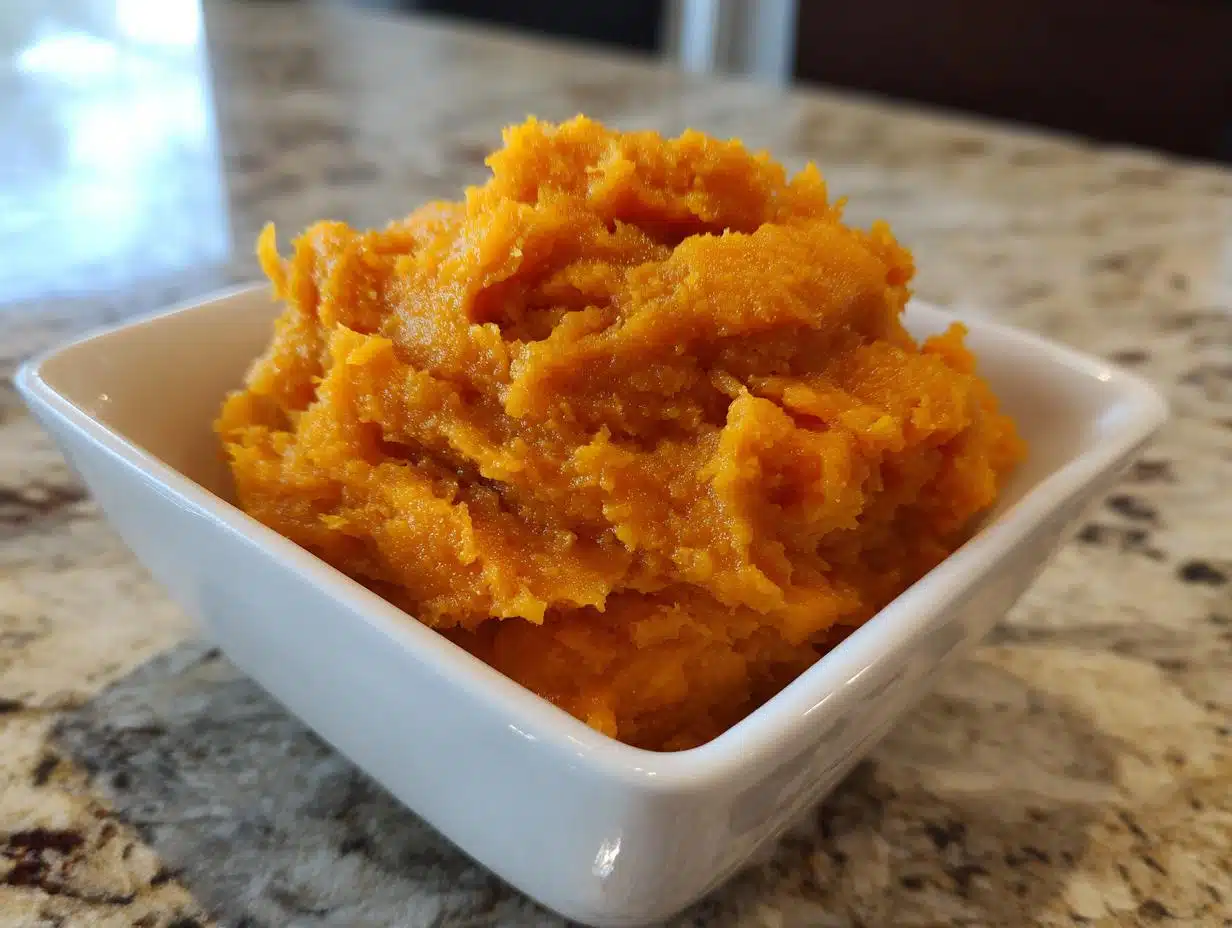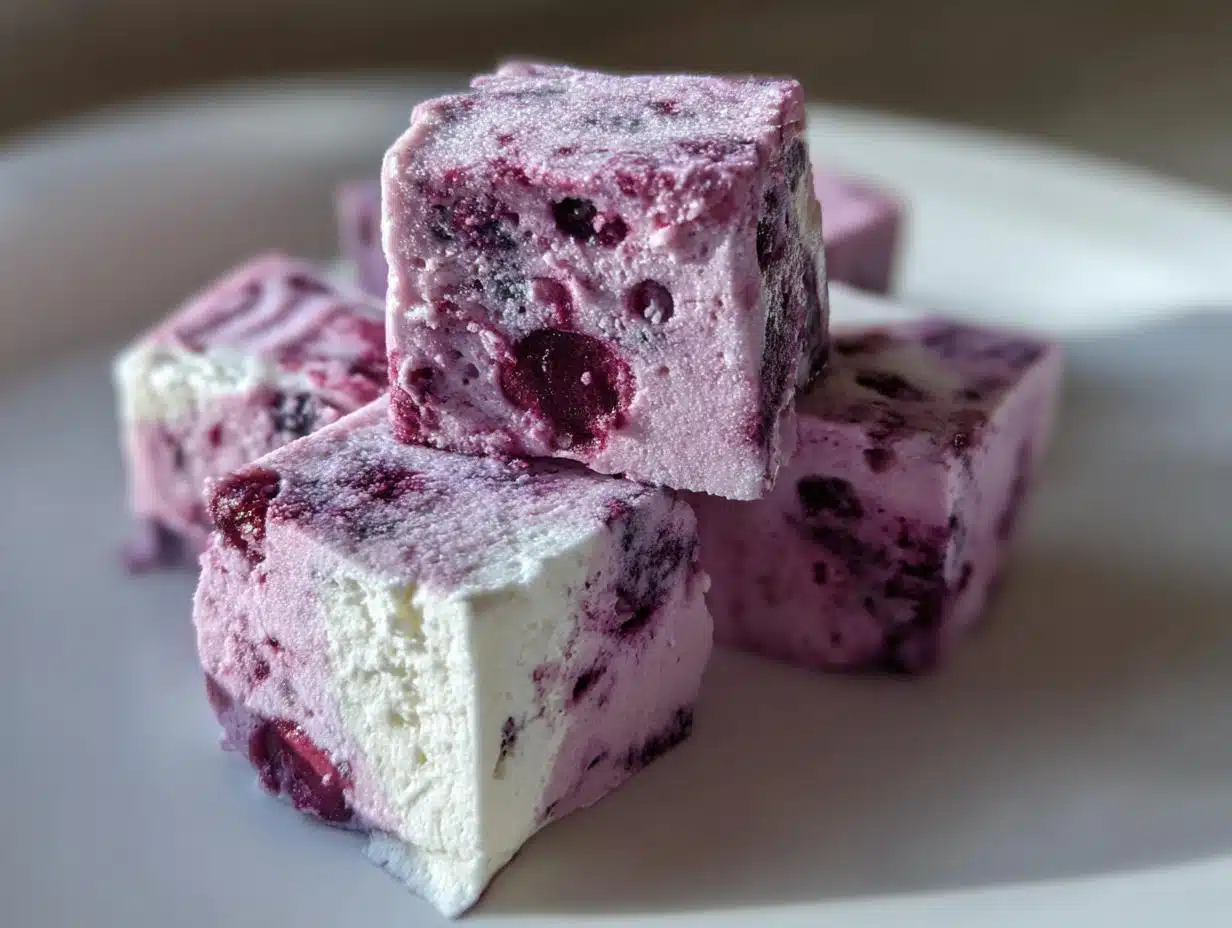Dogs deserve tasty, wholesome meals just like we do. If you’re thinking about preparing homemade beef stew for dogs, you’re in the right place. This guide will show you how to make dog-safe beef stew packed with nutrients, tailored to canine needsnot just human cravings. From beef preparation to choosing dog-friendly veggies, we’ll cover everything. We’ll also answer top questions like “Can dogs eat homemade beef stew?” and provide links to other healthy homemade dog food ideas.
Table of Contents
1. Why Make Homemade Beef Stew for Dogs?
The Benefits of Homemade Dog Food
Store-bought kibble might be convenient, but it’s often full of fillers and preservatives. Homemade food gives you control over ingredients. This means fewer allergies, better digestion, and a shinier coat for your furry friend.
When you cook beef stew for dogs at home, you can ensure the meat is lean, fresh, and not processed. Plus, it’s easier to sneak in veggies rich in vitamins and minerals.
Tailoring Meals to Your Dog’s Needs
No two dogs are alike. Some have food sensitivities, while others just love variety. By making your own stew, you can customize recipes for picky eaters or dogs with medical conditions like diabetes or joint pain. It also gives you the flexibility to rotate ingredients to prevent boredom and nutrient gaps.
2. Can Dogs Eat Homemade Beef Stew?
Ingredients Dogs Can and Cannot Eat
Absolutely dogs can eat homemade beef stew, but here’s the catch: it must be made specifically for them. Unlike human stews filled with onion, garlic, salt, and rich sauces, dog-friendly beef stew is simpler yet equally tasty for your pup. Let’s break down what’s safe and what’s not.
Here are dog-safe ingredients to include:
- Lean beef (stew meat, ground beef, sirloin)
- Carrots
- Sweet potatoes
- Peas
- Pumpkin
- Brown rice or quinoa
- Low-sodium beef broth (or homemade)
Now, here’s what to absolutely avoid in any dog stew:
- Onions and garlic (toxic to dogs)
- Salt and pepper
- Tomatoes (especially green or unripe)
- Butter or heavy oils
- Mushrooms (some wild types are toxic)
Even though something seems “natural” to us, it could be harmful to dogs. That’s why reading labels and understanding canine-safe foods is a must.
Why Human Beef Stews May Be Harmful
Most store-bought or homemade human stews are loaded with ingredients that could upset your dog’s stomach—or worse, harm their liver and kidneys over time. Even a small portion of a typical beef stew might include:
- Excess salt
- Gravy thickeners like flour or cornstarch
- Artificial flavors
- Garlic and onions (which damage red blood cells in dogs)
Imagine feeding your dog something that smells delicious but silently irritates their stomach or leads to long-term issues. That’s why tailoring the stew to your pup’s needs makes all the difference.
Looking for a fresh rercipes after all that richness? Try our Apple & Carrot Hard Bones for Dogs.
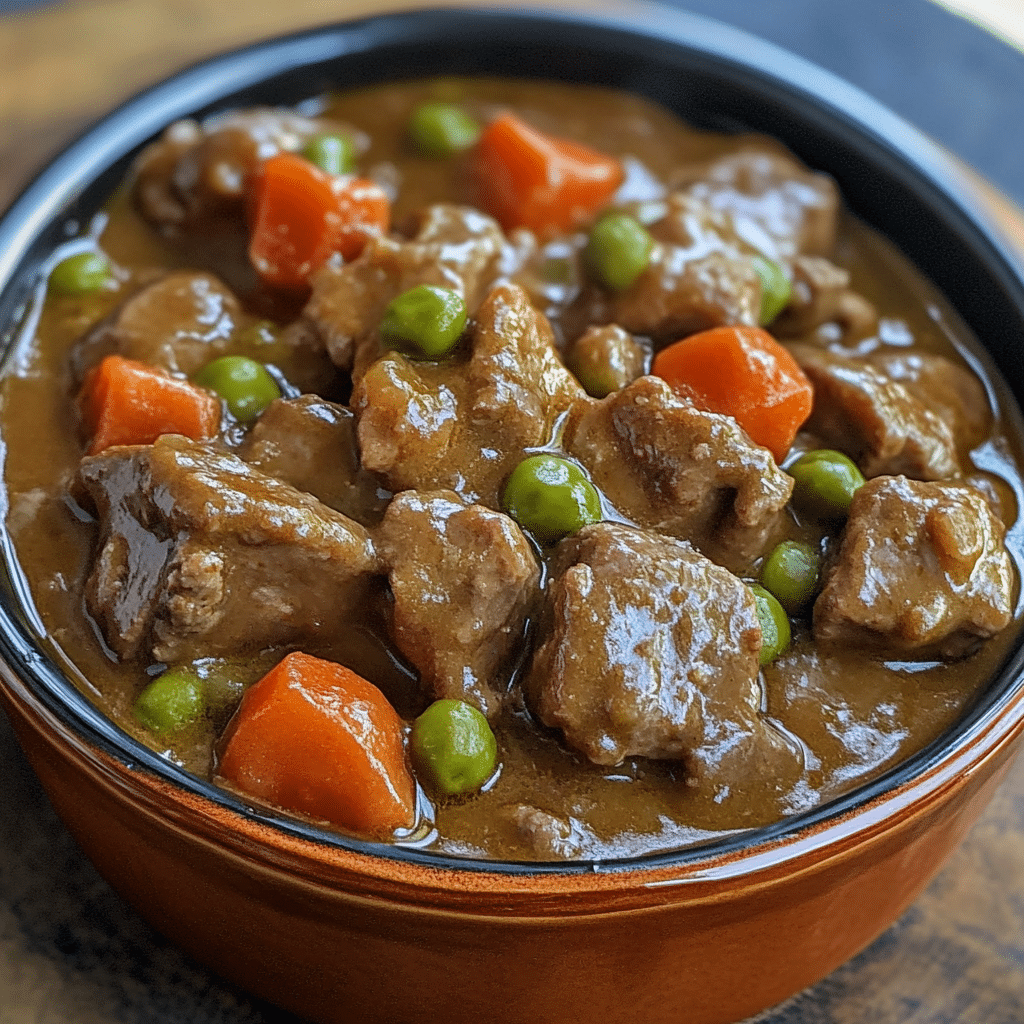
3. Choosing the Right Ingredients for Dog-Friendly Stew
Dog-Safe Vegetables and Grains
When making homemade beef stew for dogs, not just any veggie or grain will do. Choosing the right mix ensures your stew isn’t just tasty it’s also balanced and easy to digest.
Top vegetables for dog stews:
| Vegetable | Benefits |
|---|---|
| Carrots | High in beta-carotene, good for vision and immunity |
| Sweet Potatoes | Packed with fiber, vitamins A and C |
| Peas | Great source of plant protein and fiber |
| Green Beans | Low-calorie, full of essential nutrients |
| Pumpkin | Excellent for digestive health |
When it comes to grains, go for easily digestible options like:
- Brown rice – a great source of energy and fiber
- Quinoa – high in protein and contains all nine essential amino acids
- Oats – gentle on the stomach, rich in iron and B vitamins
Best Cuts of Beef for Canine Stew
Choosing the right beef ensures your stew is both nutritious and easy to chew—especially for small breeds or senior dogs.
Best beef options for dogs:
| Cut | Why It’s Great |
|---|---|
| Chuck roast | Tender when slow-cooked, rich in flavor |
| Stew meat | Already portioned, lean and affordable |
| Ground beef | Easy to digest and mix with veggies |
| Sirloin tips | Leaner choice with less fat |
Avoid fatty cuts like ribeye or brisket too much fat can lead to pancreatitis or digestive upset. Also, trim off visible fat and avoid bones, which can splinter when cooked.
Always cook beef thoroughly to eliminate harmful bacteria and never season it like you would for human meals.
4. How to Cook Beef for Dogs
Proper Cooking Techniques
When preparing beef for your dog’s stew, simplicity and safety are key. Unlike meals for humans, you won’t need sauces, oils, or seasoning. Just the essentials cooked low and slow to keep it tender and digestible.
Best cooking methods for dog-friendly beef:
- Boiling: Place cubed stew meat in a pot of water. Bring to a boil, then reduce heat and simmer for 30–40 minutes until soft.
- Slow-cooking: Use a slow cooker on low for 6–8 hours with your selected dog-safe vegetables.
- Pan-browning (without oil): Lightly sear lean ground beef or sirloin in a non-stick pan until browned. Drain excess fat before using it in the stew.
Avoid grilling, deep-frying, or charring the meat burnt edges can upset your dog’s stomach or contain harmful substances.
Seasoning: What to Use and Avoid
Your dog doesn’t need spice to enjoy their food in fact, certain seasonings can be dangerous. Here’s a simple breakdown:
Safe for dogs in moderation:
- Turmeric: Natural anti-inflammatory and digestive support
- Parsley: Freshens breath and adds trace minerals
- Rosemary: Natural antioxidant
Never use in your dog’s beef stew:
- Salt or bouillon cubes – too much sodium
- Garlic or onion powder – toxic
- Paprika, chili powder, or pepper – irritates digestive tract
- Butter or heavy oils – adds unnecessary fat
If you’re cooking beef stew for both you and your dog, make two versions. One seasoned for humans and one kept plain for your pup’s health.
5. Step-by-Step Beef Stew Recipe for Dogs
Ingredient List and Substitutions
Here’s a simple, healthy, and vet-approved beef stew recipe your dog will love. All ingredients are safe, nutrient-rich, and easy to find.
Core Ingredients (serves 3–5 medium dogs):
- 1 lb lean beef stew meat (chuck, sirloin, or ground)
- 1 cup chopped carrots
- 1 cup diced sweet potatoes
- ½ cup peas (frozen or fresh)
- ½ cup pumpkin puree (unsweetened)
- ½ cup brown rice (cooked)
- 3 cups water or homemade unsalted beef broth
- 1 tsp turmeric (optional, anti-inflammatory)
- 1 tsp chopped parsley (optional, for breath)
Optional substitutions:
| Swap This | For This |
|---|---|
| Sweet potatoes | Butternut squash or pumpkin |
| Brown rice | Cooked quinoa or oats |
| Peas | Green beans or zucchini |
Avoid onions, garlic, or pre-seasoned stock. Always check labels if you’re not making broth from scratch.
Cooking Instructions and Storage Tips
Follow this method to cook a stew that’s safe and delicious for your pup:
Step-by-Step Directions:
- In a large pot, add beef and water (or broth).
- Bring to a boil, then lower heat and simmer for 20 minutes.
- Add carrots and sweet potatoes. Simmer for 15 more minutes.
- Mix in peas, pumpkin, and cooked brown rice.
- Stir gently and simmer for another 10 minutes.
- Let it cool before serving. Store the rest in the fridge or freezer.
Storage Guide:
| Storage Method | Duration | Notes |
|---|---|---|
| Refrigerator | Up to 5 days | Use airtight containers |
| Freezer | Up to 3 months | Portion into freezer-safe bags |
Pro tip: Freeze in silicone molds or ice cube trays for easy defrosting!
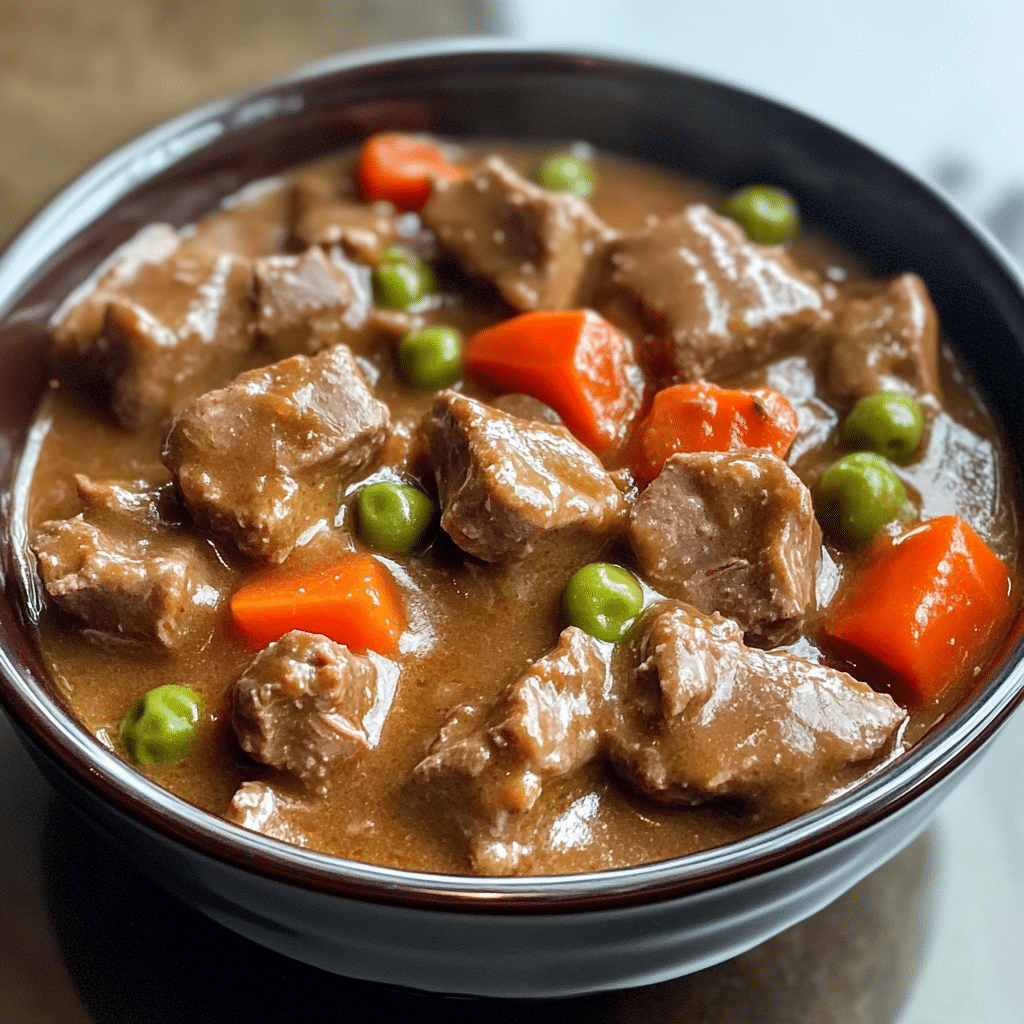
6. Nutritional Value of Homemade Beef Stew
Macronutrients: Protein, Fat, Carbs
When you make homemade beef stew for dogs, you’re in control of the quality and balance of nutrients. This ensures your dog isn’t just getting a tasty meal—but one that supports their long-term health.
Macronutrient Breakdown (per 1 cup serving):
| Nutrient | Approximate Value | Function for Dogs |
|---|---|---|
| Protein | 18–22g | Builds muscle, supports organs |
| Fat | 5–8g | Energy source, aids nutrient absorption |
| Carbohydrates | 15–20g | Energy and digestive fiber |
Lean beef is a powerhouse of complete protein, delivering all the amino acids dogs need to thrive. Paired with complex carbs like brown rice and sweet potatoes, the stew provides long-lasting energy without sugar spikes.
Plus, veggies like carrots and peas contribute additional fiber and phytonutrients, improving digestion and stool quality.
Vitamins and Minerals Breakdown
Every spoonful of this stew delivers essential micronutrients. Here’s a quick look:
| Vitamin / Mineral | Found In | Benefit |
|---|---|---|
| Vitamin A | Carrots, pumpkin | Eye health, immune support |
| B Vitamins | Beef, rice | Energy metabolism, brain function |
| Iron | Beef | Oxygen transport in blood |
| Zinc | Beef | Skin, coat, immune system |
| Potassium | Sweet potatoes | Muscle function, hydration |
| Fiber | Peas, carrots | Digestive regularity |
Why this matters: Many commercial dog foods lose nutrients during processing. Homemade stew, especially slow-cooked, retains more vitamins—so your dog gets more from every bite.
7. How Often Should Dogs Eat Beef Stew?
Portion Sizes by Weight and Breed
Feeding too much even of a good thing can cause weight gain, upset stomach, or imbalance in a dog’s diet. That’s why it’s crucial to know how much homemade beef stew for dogs is just right.
General Portion Guidelines (based on adult, moderately active dogs):
| Dog’s Weight | Serving Size per Day | Notes |
|---|---|---|
| 10–20 lbs | ¾ to 1 cup | Split into 2 meals |
| 20–50 lbs | 1½ to 2½ cups | Monitor for weight changes |
| 50–90 lbs | 3 to 4 cups | Add variety with veggies |
Always adjust based on your dog’s activity level, metabolism, and vet recommendations. Puppies, seniors, and dogs with health conditions may need specialized portions.
Rotation and Variety in Meals
Feeding your dog beef stew daily is fine if the meal is balanced and varied. But even with the best recipe, rotating ingredients ensures your dog gets a broader spectrum of nutrients.
Rotate between:
- Proteins – swap beef for chicken, turkey, or canned salmon
- Veggies – rotate sweet potatoes with pumpkin, green beans, or spinach
- Grains – try oats or quinoa occasionally
This not only prevents boredom but reduces the chance of nutrient deficiencies or intolerances.
If you’re meal-prepping, freeze small batches with different ingredients. That way, your dog enjoys variety without the stress of cooking daily.
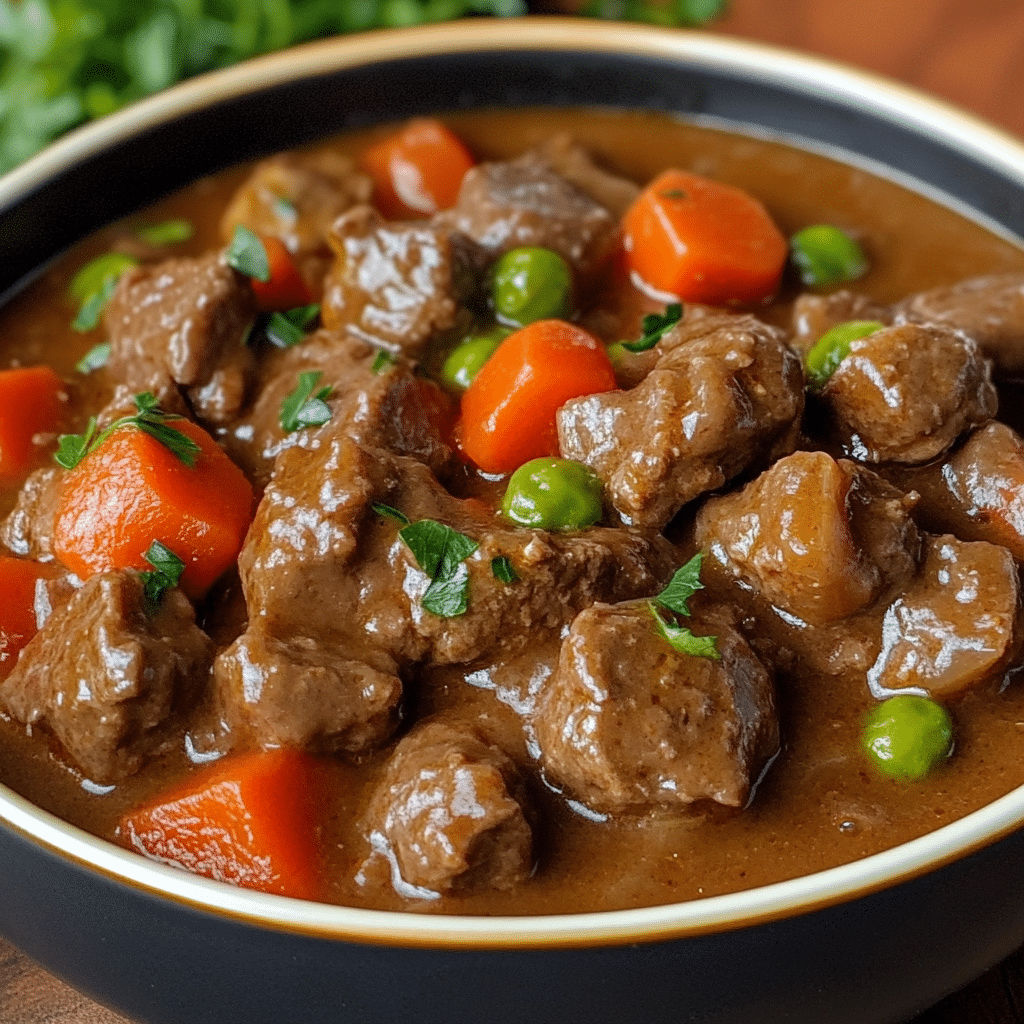
8. Homemade Beef Stew vs Commercial Dog Food
Nutritional Comparison Table
You may wonder is homemade beef stew really better than store-bought dog food? Let’s compare the two across several key categories:
| Feature | Homemade Beef Stew for Dogs | Commercial Dog Food |
|---|---|---|
| Protein Quality | Fresh, lean, and high in bioavailability | Often meat by-products or meal |
| Ingredients | Whole, human-grade ingredients | Fillers, preservatives, dyes |
| Digestibility | Highly digestible when properly cooked | May contain allergens and irritants |
| Flavor | Fresh, natural, customizable | Artificial flavoring added |
| Nutrient Control | Full control over macro/micronutrients | Generalized formulas |
| Cost Over Time | Varies; can be economical with planning | Often more expensive for quality brands |
| Allergy Management | Easy to customize | Harder to avoid allergens |
If your dog suffers from skin issues, frequent stomach upsets, or allergies, switching to a controlled homemade beef stew diet can make a noticeable difference in just a few weeks.
Plus, home cooking can be a bonding activity. You’re not just feeding your pup you’re investing in their long-term wellness.
Cost and Health Benefits Over Time
While premium commercial dog food bags can cost $60+ per month, making your own stew can significantly reduce cost especially when you buy ingredients in bulk or on sale.
Let’s break it down:
| Item | Monthly Cost Estimate (Homemade) |
|---|---|
| Beef (5 lbs) | $25–30 |
| Veggies & Grains | $10–15 |
| Supplements (optional) | $5–10 |
| Total | $40–55 |
Over time, this not only saves money but also helps avoid costly vet bills from diet-related health problems like obesity, poor digestion, or food allergies.
9. Common Mistakes to Avoid
Unsafe Additives to Watch For
Cooking homemade beef stew for dogs is simple but a few common mistakes can turn a healthy dish into a harmful one. First up: seasonings and additives.
Avoid these ingredients at all costs:
- Garlic and onions – even small amounts are toxic to dogs
- Salt and pepper – dogs don’t need seasoning, and excess sodium can be harmful
- Canned broths or soups – often loaded with MSG and sodium
- Butter, oils, or gravies – add fat with no health benefits
- Artificial sweeteners (like xylitol) – extremely toxic, even in trace amounts
Even something as basic as store-bought beef broth may contain onion powder. Always read labels—or better yet, make your own from boiled beef bones with no seasoning.
Overcooking or Under-seasoning
Yes, you read that right under-seasoning, but not in the way you think. While dogs don’t need spices, they do need variety and balance to make the stew nutritionally complete.
Here’s what to keep in mind:
- Don’t overboil beef to the point where it’s dry or rubbery
- Don’t skip essential veggies just to keep it simple
- Don’t rely on one recipe forever rotate ingredients for better nutrition
- Avoid feeding stew daily unless it’s been reviewed by a vet or animal nutritionist
Balance matters. If you’re using homemade stew as your dog’s full-time food, consider adding canine-safe multivitamin powders or calcium sources (like ground eggshells or bone meal) to prevent deficiencies.
FAQs
Can dogs eat homemade beef stew?
Yes, dogs can safely eat homemade beef stew as long as it’s made with dog-safe ingredients. Avoid onions, garlic, salt, and heavy seasonings. Stick to lean beef, vegetables like carrots and peas, and healthy grains like rice or oats.
Can I make stew for my dog?
Absolutely. Making stew for your dog allows you to control what goes into their bowl. You can adjust for allergies, food sensitivities, and taste preferences while ensuring it’s fresh and nutritious.
How do I cook beef for my dog?
Boil or slow-cook lean cuts of beef until fully cooked and tender. Avoid frying or grilling with oil or seasoning. If using ground beef, brown it in a non-stick pan and drain the fat before serving.
How long to boil stew meat for a dog?
Simmer beef stew meat in water or low-sodium broth for 30 to 40 minutes, or until the meat is soft and fully cooked. For tender results, especially with tougher cuts like chuck, longer simmering works best.
What are the best ingredients to put in homemade dog food?
The best ingredients include:
- Lean meats (beef, chicken, turkey)
- Vegetables (carrots, peas, green beans)
- Complex carbs (brown rice, sweet potatoes, quinoa)
- Healthy fats (fish oil, flaxseed)
- Supplements (calcium, omega-3s) when needed
Avoid toxic foods like onions, garlic, grapes, chocolate, and anything processed.
Conclusion
Feeding your dog homemade beef stew is one of the easiest and most rewarding ways to show love through nutrition. It’s fresher, safer, and far more customizable than most commercial foods. With proper ingredients, balance, and portion control, your stew can be a staple that keeps your pup healthy and tail-wagging happy.
Whether you’re introducing homemade meals or replacing store-bought food entirely, the tips and recipes in this guide will help you do it the right way.
For more recipes follow me on PINTEREST

